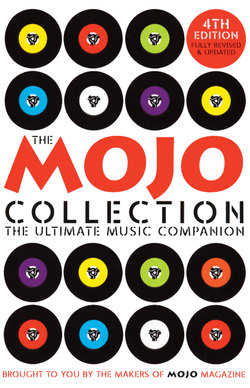Читать книгу The Mojo Collection - Various Mojo Magazine - Страница 182
На сайте Литреса книга снята с продажи.
King Crimson In The Court Of The Crimson King A bunch of unknown British jazz rock virtuosos and their pet wordsmith define prog rock with their ambitious debut.
ОглавлениеRecord label: Island (UK) Atlantic (US)
Produced: King Crimson
Recorded: Wessex Sound Studios, London; July–Spetember 1969
Released: October 10, 1969
Chart peaks: 5 (UK) 28 (US)
Personnel: Robert Fripp (g); Ian McDonald (reeds, woodwind, vibes, k, v, Mellotron); Greg Lake (b, v); Michael Giles (d, pc, v); Peter Sinfield (words, illumination)
Track Listing: 21st Century Schizoid Man (including Mirrors) (S); I Talk To The Wind; Epitaph (including March For No Reason; Tomorrow And Tomorrow); Moonchild (including The Dream; The Illusion); The Court Of The Crimson King (including The Return Of The Fire Witch; The Dance Of The Puppets) (S)
Running time: 43.54
Current CD: Discipline DGM0501
Further listening: Fripp and Sinfield taped the rest of the line-up’s material on In The Wake Of Poseidon (1970). Cirkus (1999) is a good 2-CD round-up of 30 years of Crimson
Further reading: In The Court Of King Crimson (Sid Smith, 2007); www.elephant-talk.com; www.disciplineglobalmobile.com
Download: www.dgmlive.com
This intense brew of classical melodies, jazz and hard rock, matched with fantastical lyrics – and housed in an intriguing, lurid sleeve – created the template for progressive rock. All the more remarkable, then, that the music was created in a week.
Michael Giles and Robert Fripp had briefly been together in a band called Brain and moved in a folky direction as a trio, Giles, Giles & Fripp (with Michael’s brother Peter), cutting one poorly-selling album, The Cheerful Insanity Of …, and a single which featured former army bandsman Ian McDonald as a guest. Greg Lake, a school friend of Fripp’s and former member of The Gods, joined, Peter Giles left and the new quartet scored a management deal, a John Peel session and a three-month residency at the Marquee Club in London under the name King Crimson. Pete Sinfield, an associate of McDonald’s, was recruited as a roadie and lyricist. They began work on the album shortly after appearing in front of 600,000 people at The Rolling Stones’ free concert in Hyde Park.
Because of Robert Fripp’s subsequent takeover of the group, In The Court Of The Crimson King is often wrongly assumed to be largely his record. But it was a collective effort. A session with Moody Blues producer Tony Clark fell apart and the band quickly concluded they could work better by themselves. Ian McDonald, who wrote much of the music, recalls: ‘We recorded it in eight days, very quickly. There was no argument about anything. We just knew if an idea was usable and if it wasn’t there was no fighting.’ They employed whatever came to hand in the studio: all the keys on an ancient pipe organ were jammed down to create the wheezy industrial noises that open the record. A Mellotron was used for the grandiose backdrop to the title track. McDonald grabbed a set of vibes for Illusion, the last segment of Moonchild. This meandering trilogy – which Fripp now admits should probably have been edited – was improvised when they realised they’d used all their original material but were reluctant to record a cover version.
The album was released to wide acclaim, Pete Townshend declaring it ‘an uncanny masterpiece’. But some pundits (and anyone who liked to dance) were suspicious; critic Lester Bangs condemned it as an unholy mix of ‘myth, mystification and Mellotrons’. Nonetheless, the album quickly climbed the charts. But within four months the line-up had fallen apart, exhausted by touring and the pressure of sudden success. Says Fripp, ‘Some of the musical vocabulary may seem dated now, but there’s still something remarkable there waiting for listeners.’
